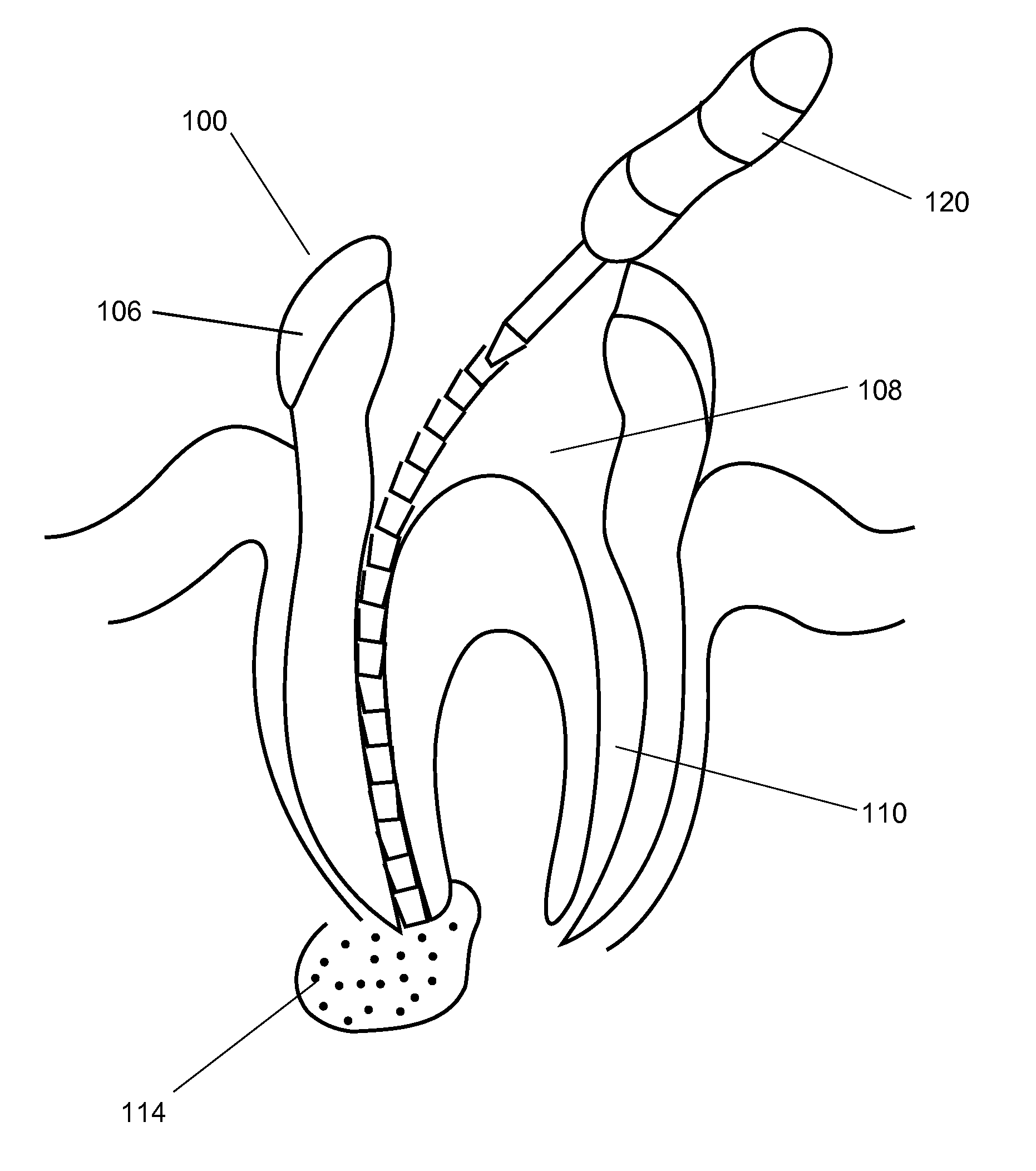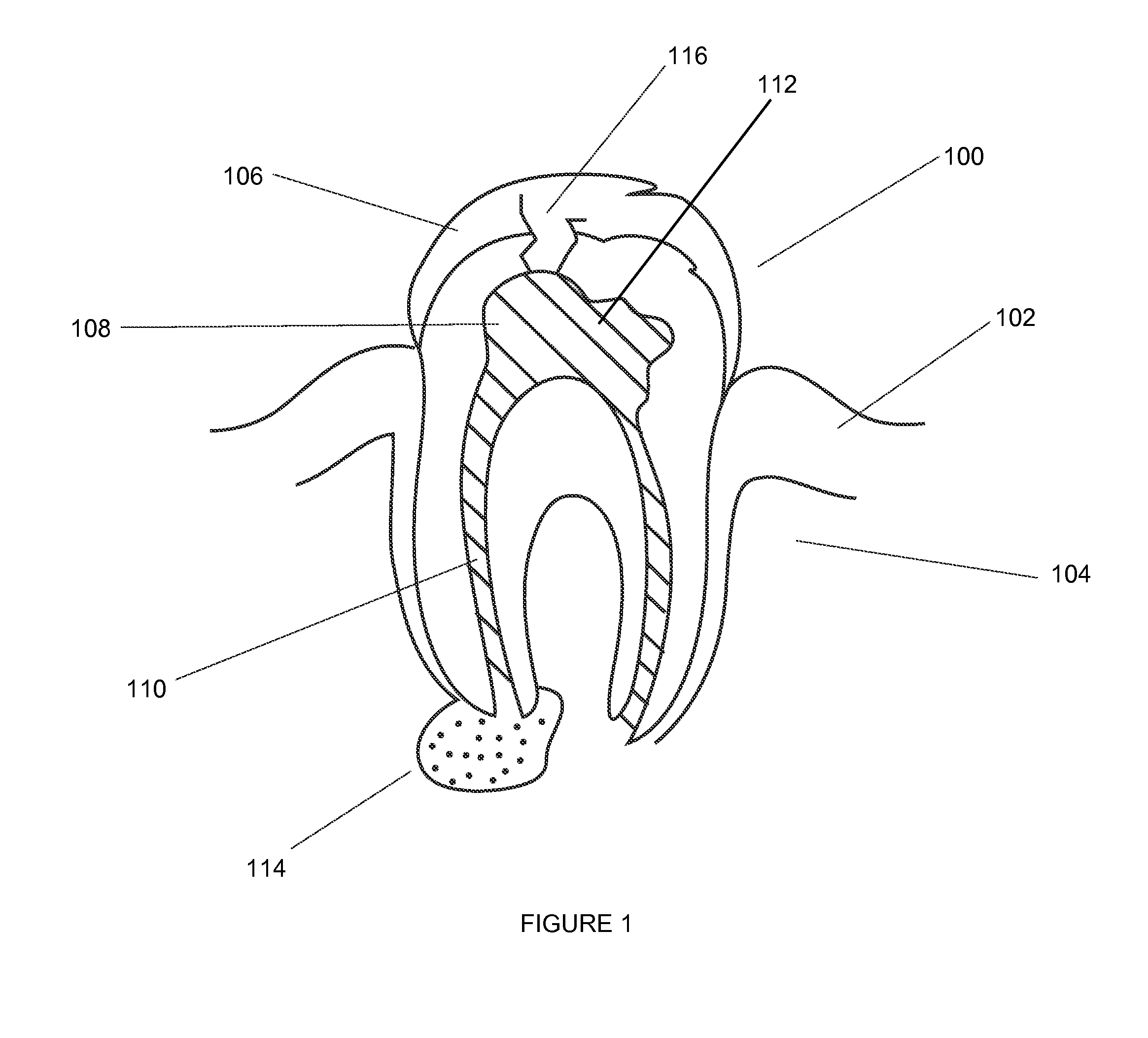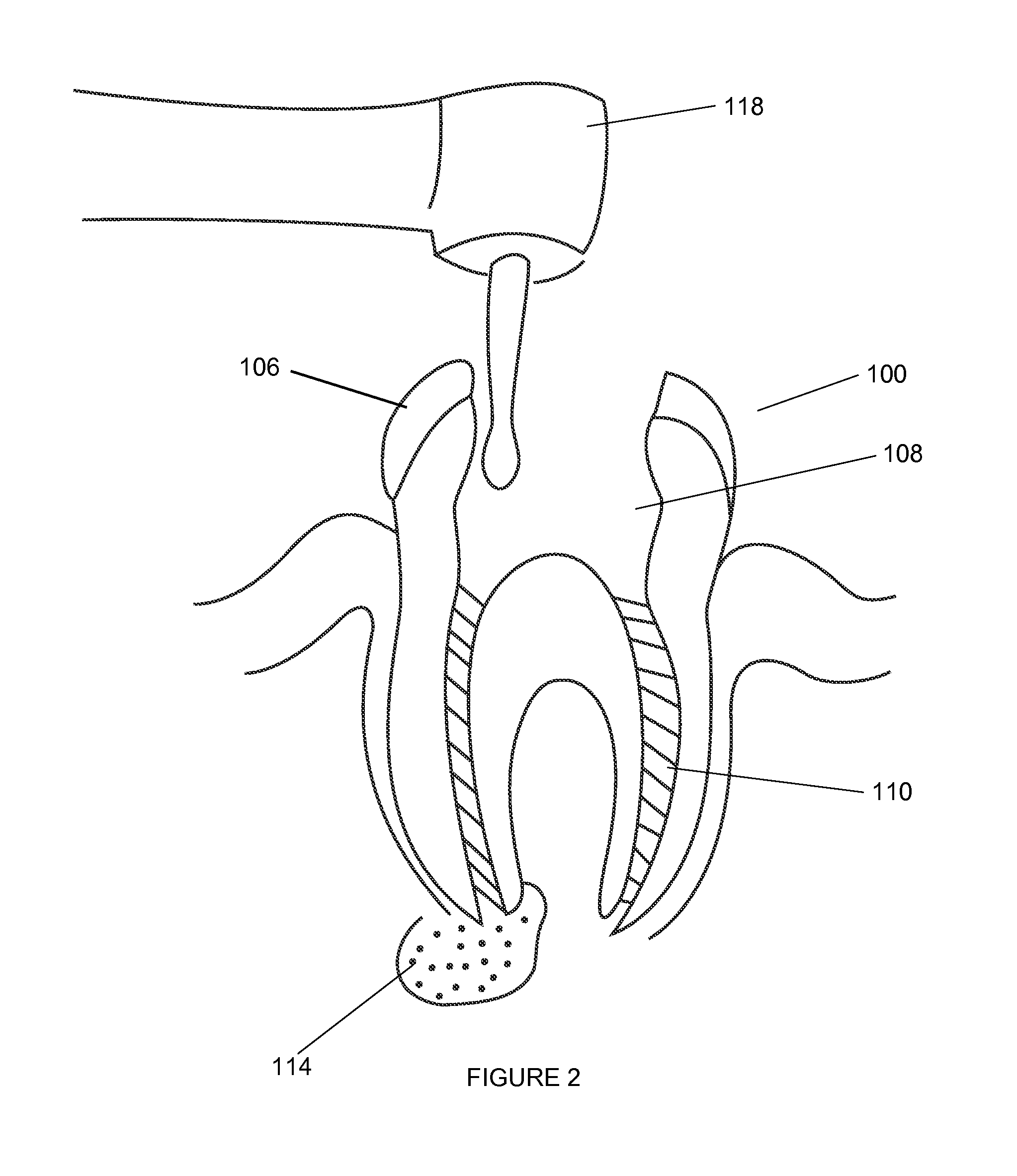Single component tooth root sealer
a tooth root sealer and single-component technology, applied in the field of dental surgery, can solve the problems of necrosis of teeth, infection of pulp of teeth, pain of swelling of pulp,
- Summary
- Abstract
- Description
- Claims
- Application Information
AI Technical Summary
Benefits of technology
Problems solved by technology
Method used
Image
Examples
example 1
[0035]Irgacure 2022-0.5%[0036]Calcium hydroxide-5.0%[0037]Loctite 5248-84.5%[0038]Barium Sulfate-10.0%
[0039]The composition described in Example 1 may be manufactured by blending the ingredients in a vacuum capable paddle mixer in a dehydrated environment, with the mixer equipment being dehydrated with acetone prior to use. The resulting single component tooth root sealer was tested for moisture cure in air at room temperature. The single component tooth root sealer went from a paste form to an elastomeric solid in about 24 to 48 hours after exposure to the air.
[0040]The resulting single component tooth root sealer was also tested for light cure capabilities and was found to surface cure to a depth of about 2 mm after exposure to 60 seconds of light with a dental light having an output of about 800 mw / cm2. The low surface skin thickness is due to the opaque calcium hydroxide blocking incoming light.
example 2
[0041]Irgacure 2022-1.0%[0042]Calcium hydroxide-10.0%[0043]Loctite 5248-79.0%[0044]Bismuth oxy chloride-10.0%
[0045]The composition described in Example 2 may be manufactured by blending the ingredients in a vacuum capable paddle mixer in a dehydrated environment, with the mixer equipment being dehydrated with acetone prior to use. The resulting single component tooth root sealer was tested for moisture cure in air at room temperature. The single component tooth root sealer went from a paste form to an elastomeric solid in about 24 to 48 hours after exposure to the air.
[0046]The resulting single component tooth root sealer was also tested for light cure capabilities and was found to surface cure to a depth of about 2 mm after exposure to 60 seconds of light with a dental light having an output of about 800 mw / cm2. The low surface skin thickness is due to the opaque calcium hydroxide blocking incoming light.
[0047]The foregoing processes can be used to make similar effective compositio...
PUM
| Property | Measurement | Unit |
|---|---|---|
| temperature | aaaaa | aaaaa |
| dimensions | aaaaa | aaaaa |
| composition | aaaaa | aaaaa |
Abstract
Description
Claims
Application Information
 Login to View More
Login to View More - R&D
- Intellectual Property
- Life Sciences
- Materials
- Tech Scout
- Unparalleled Data Quality
- Higher Quality Content
- 60% Fewer Hallucinations
Browse by: Latest US Patents, China's latest patents, Technical Efficacy Thesaurus, Application Domain, Technology Topic, Popular Technical Reports.
© 2025 PatSnap. All rights reserved.Legal|Privacy policy|Modern Slavery Act Transparency Statement|Sitemap|About US| Contact US: help@patsnap.com



